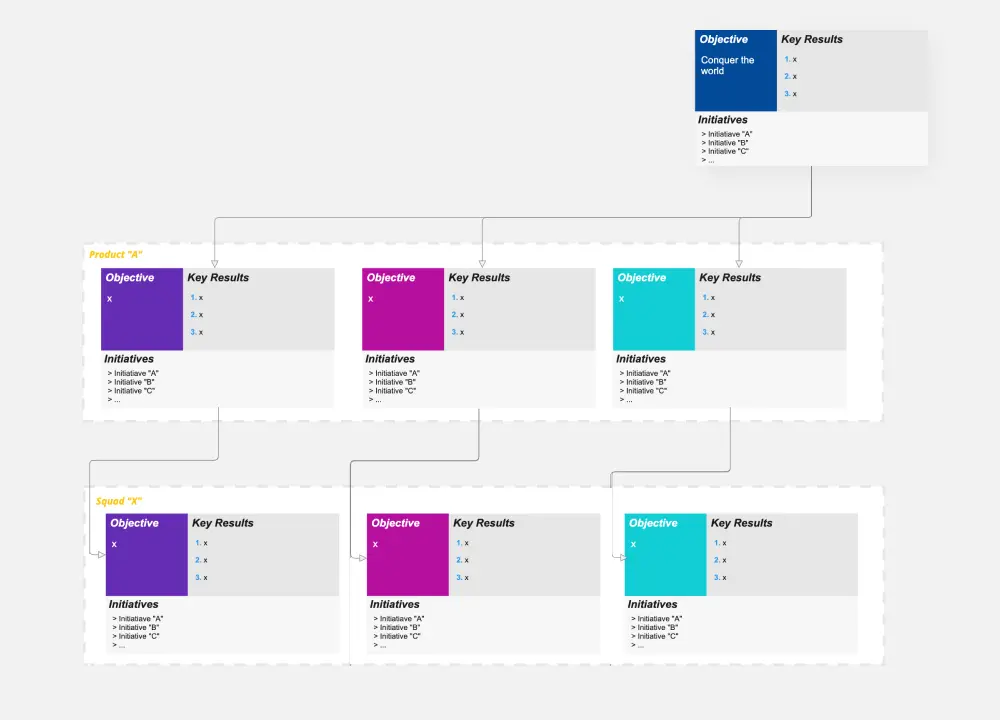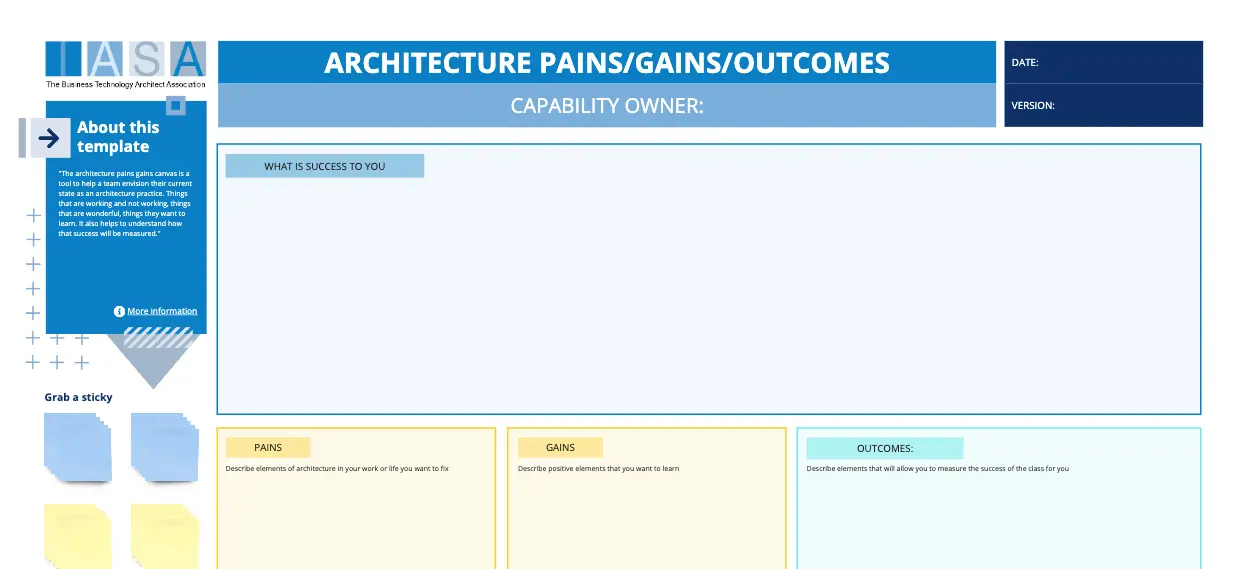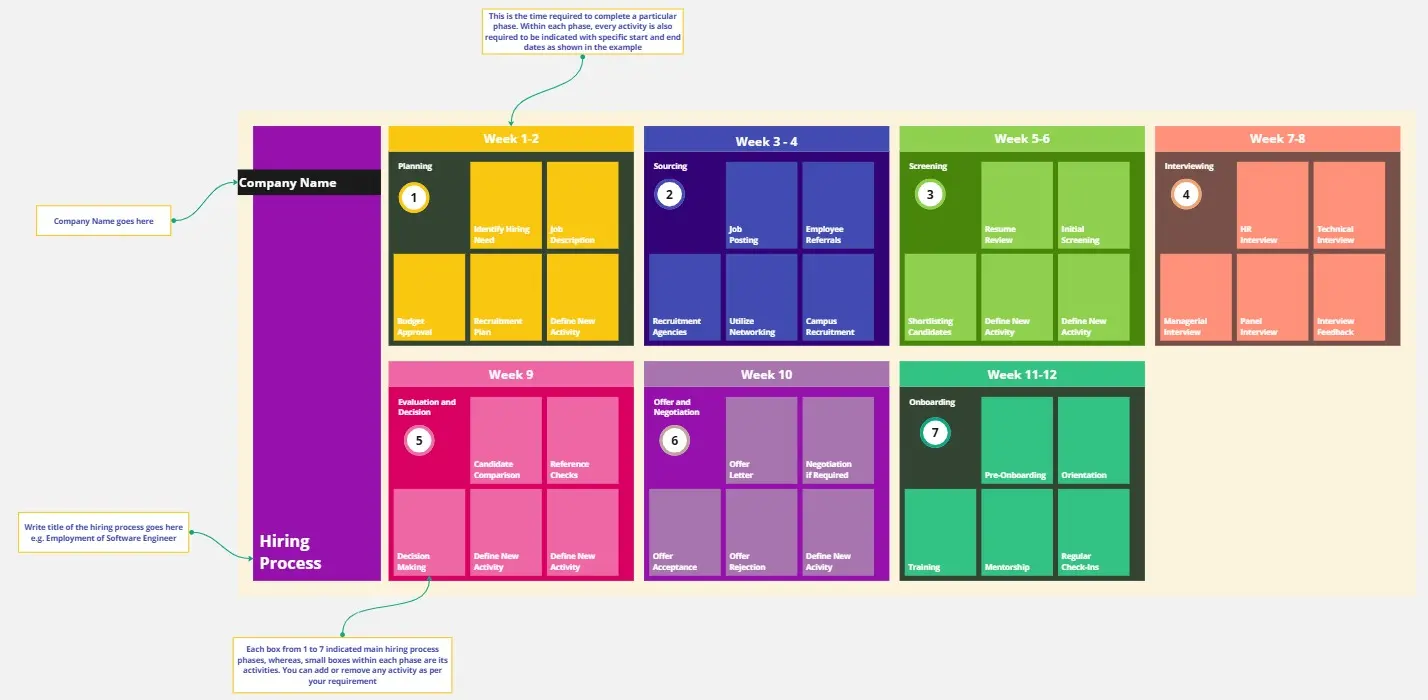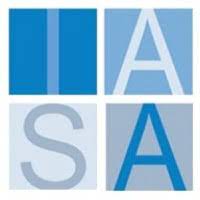BPMN Diagram for HR Processes
BPMN Diagram HR Processes
The HR Processes BPMN diagram provides a comprehensive visual representation of the various stages involved in the Human Resources lifecycle. This detailed diagram is divided into five primary lanes, each representing a critical HR function: Recruitment, Onboarding, Performance Management, Employee Development, and Offboarding.
Pools and Lanes:
HR Department Pool:
Recruitment Lane
Onboarding Lane
Performance Management Lane
Employee Development Lane
Offboarding Lane
Detailed Processes:
Recruitment Process:
Start Event: Job Requisition - The recruitment process is initiated when a job requisition is created by a department manager.
Create Job Description - HR prepares a detailed job description document.
Post Job Opening - The job opening is posted on various platforms.
Receive Applications - HR collects applications submitted by candidates.
Screen Applications - Initial screening of applications to shortlist candidates.
Conduct Interviews - Interviews are conducted with shortlisted candidates.
Evaluate Candidates - Evaluation of candidates based on interview feedback.
Decision Point (Exclusive Gateway) - Approve or reject candidates.
If Rejected: Send rejection emails (End Event).
Offer Job - Extend a job offer to the selected candidate.
End Event: Candidate Hired - The candidate accepts the job offer, completing the recruitment process.
Onboarding Process:
Start Event: Job Offer Accepted - Onboarding begins once the candidate accepts the job offer.
Prepare Onboarding Plan - HR creates a comprehensive onboarding plan.
Complete Paperwork - Necessary paperwork, including the employment contract, is completed.
Parallel Tasks:
Setup Workstation - IT sets up the new hire's workstation.
Conduct Orientation Session - HR conducts an orientation session for the new hire.
Assign Mentor - A mentor is assigned to the new employee.
End Event: New Employee Onboarded - Onboarding is completed successfully.
Performance Management Process:
Start Event: Review Period Begins - The performance review period starts.
Set Performance Goals - Performance goals are set collaboratively with the employee.
Conduct Mid-Year Review - A mid-year performance review is conducted.
Provide Feedback - Feedback is given to the employee based on the mid-year review.
Conduct Annual Review - An annual performance review is conducted.
Decision Point (Exclusive Gateway) - Determine if the performance is satisfactory.
If Not Satisfactory: Develop a Performance Improvement Plan (PIP).
End Event: Performance Review Completed - The performance review cycle is completed.
Employee Development Process:
Start Event: Development Plan Initiated - An employee development plan is initiated.
Identify Development Needs - HR identifies the employee's development needs.
Create Development Plan - A personalized development plan is created.
Enroll in Training Programs - The employee is enrolled in relevant training programs.
Track Progress - The progress of the employee's development is monitored.
Evaluate Training Effectiveness - The effectiveness of the training programs is evaluated.
End Event: Employee Development Completed - The employee development process is completed.
Offboarding Process:
Start Event: Resignation/Termination Initiated - The offboarding process starts when an employee resigns or is terminated.
Conduct Exit Interview - An exit interview is conducted to gather feedback.
Revoke System Access - IT revokes the employee's system access.
Retrieve Company Property - Company property is collected from the employee.
Process Final Payroll - The final payroll is processed.
End Event: Employee Offboarded - The offboarding process is completed successfully.
Conclusion
This detailed BPMN diagram for HR processes ensures that each step, decision point, and data flow is accurately captured. It provides a clear and structured visualization of the HR lifecycle, facilitating better understanding and management of HR functions. This diagram can be constructed and visualized in Miro to enhance clarity and efficiency in HR processes. Cheers
Khawaja Rizwan
Categories
Similar templates





